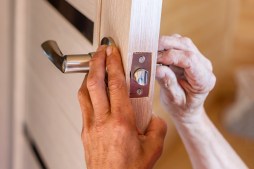Troubleshooting Problems After Replacing an Oven Knob: Solutions and Advice
Replacing a broken oven knob is a common household repair that can restore your oven’s functionality. However, after installing the new knob, some users might encounter issues that prevent the oven from working properly. This article will guide you through common problems faced after replacing an oven knob and provide practical solutions to get your appliance back in perfect working order.
Common Issues After Replacing an Oven Knob
One frequent problem is the new knob not fitting correctly or slipping off during use. This can happen if the replacement knob isn’t an exact match for your oven model or if it wasn’t installed properly. Other issues include the oven not responding when turning the knob or difficulty in turning it smoothly, which may indicate internal alignment problems with the control shaft.
Ensuring Proper Installation of Your New Oven Knob
To avoid issues, first make sure you purchase a replacement knob specifically designed for your oven model. Before installation, clean any debris or residue from the control shaft to ensure a snug fit. When placing the new knob onto the shaft, apply firm but gentle pressure until it clicks into place or feels secure. Avoid forcing it as this could damage internal components.
Steps to Troubleshoot Functionality Problems
If turning the new knob doesn’t activate your oven controls, check if it’s seated properly on the shaft and aligned with any indicator markings. You may also want to inspect inside for any broken clips or connectors that could have been disturbed during replacement. If problems persist, consult your user manual for specific troubleshooting steps related to your appliance model.
When to Seek Professional Assistance
Sometimes issues after replacing an oven knob stem from electrical faults or damaged internal components beyond simple DIY repairs. If you notice sparks, unusual noises, or if your oven fails to heat despite correct installation of knobs and controls, it’s advisable to contact a qualified appliance technician for safety and effective repair.
Tips for Maintaining Your Oven Knobs
To prolong the life of your knobs and avoid future replacements, clean them regularly using mild soap and water—avoid harsh chemicals that can degrade plastic parts. Handle knobs gently when adjusting temperatures and always replace broken knobs promptly to prevent further damage to control mechanisms.
Replacing a broken oven knob is often straightforward but knowing how to troubleshoot potential post-replacement issues ensures smooth operation of your appliance. By following these tips and solutions carefully, you can confidently maintain full control over cooking settings without unnecessary delays.
This text was generated using a large language model, and select text has been reviewed and moderated for purposes such as readability.


